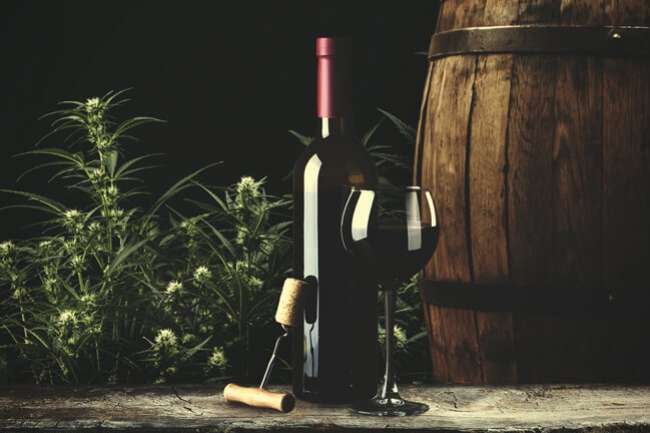A handful of startups hope that cannabis-infused drinks will become a trend. But while other CBD suppliers have leaned more toward soft drinks, these producers are looking for the bronze ring with the development of “cannabis wine.”
A wine-like product, these THC and CBD-infused concotes are made from wine grapes sourced from renowned regions like Sonoma County and California’s Napa Valley. But instead of feeling the effect of alcohol, the sensation is due to the addition of a mixture of water-soluble cannabis to the dealcoholized wine. And like real wine, you’ll feel the effects in a matter of minutes.
But legal restrictions, skepticism regarding cannabis, and the novelty of the infused beverage keep the product in a niche. It currently accounts for just 1% of the cannabis use category, a percentage so small that the trend predictors in the Wine Analysis Report, which tracks all types of beverages, don’t even track it. But that will increase in the future, growers say, as more cannabis fans discover new methods of consumption and cannabis curious gravitate toward a familiar product.
“Californians love cannabis and they love wine, and we knew cannabis wine would be a hit,” says Josh Lizotte, co-founder and CEO of Rebel Coast, which, in 2018, became the first brand in throw a cannabis wine. “People are very curious about it. It attracts a lot of attention from consumers. “
Rebel Coast’s cannabis drinks, including Sauvage (made from Sonoma-grown Sauvignon Blanc grapes), are found in more than 200 dispensaries across the state of California, a huge success for the brand in just a few years. When Rebel Coast first released a cannabis wine, consumers had no idea what exactly it was. (Many of them don’t today either.) He and his team spend much of their time educating people about drinking, starting with how it is made.
The first step, once the wine is in hand, is to eliminate the alcohol, as California law states that products cannot contain both alcohol and cannabis. However, the process is complicated as dealcoholization can also extract important natural flavors and aromas from wine. It is a careful system to keep everything intact.
Producers then mix carrier agents with cannabis oil, turning a non-water-soluble product into a water-soluble one that is tasteless and odorless. It is then converted into nano-sized droplets through nano-emulsion technology, so that the cannabis integrates with the liquid and is absorbed more quickly when drunk. Activation can take between five and 15 minutes, comparable to the time it takes to feel the alcoholic effects of a glass of wine.
However, it has been a challenge, given the restrictions around the marketing and sale of the product. For one thing, Lizotte says, cannabis wine brands can’t use “wine,” “dealcoholized,” or any term associated with wine, such as “rosé,” on labels or in marketing. Then, of course, there are the massive 30% state and local taxes, which he says are “a burden on consumers” and therefore the growth of these brands. Third, consumers still do not have a good understanding of what the beverage is, which means that the responsibility for educating consumers rests with brands. And lastly, well, cannabis is still illegal in many states, which is why brands like House of Saka and Rebel Coast are only sold in California.
Lizotte echoes that sentiment – she’s not trying to get a wine snob to switch to her product. Most wine drinkers probably wouldn’t even like his drinks, he says, “if you pick up a bottle of cannabis-infused wine and assume it will taste like stellar Napa wine, you’ll probably be disappointed.” Lizotte believes that the confrontation of cannabis with the wine industry is a media hype.
Add to that the growing consumer interest in the plant, and all of these producers are confident that their drinks will be a success, no pun intended




